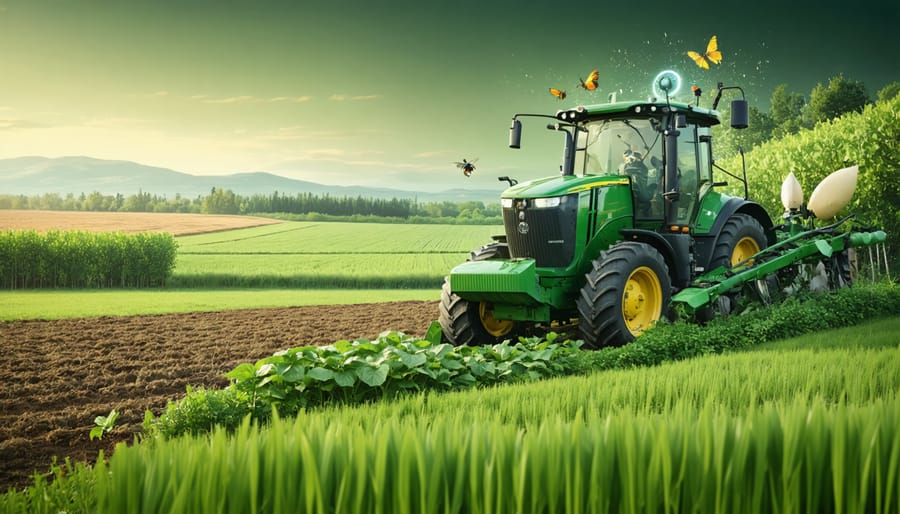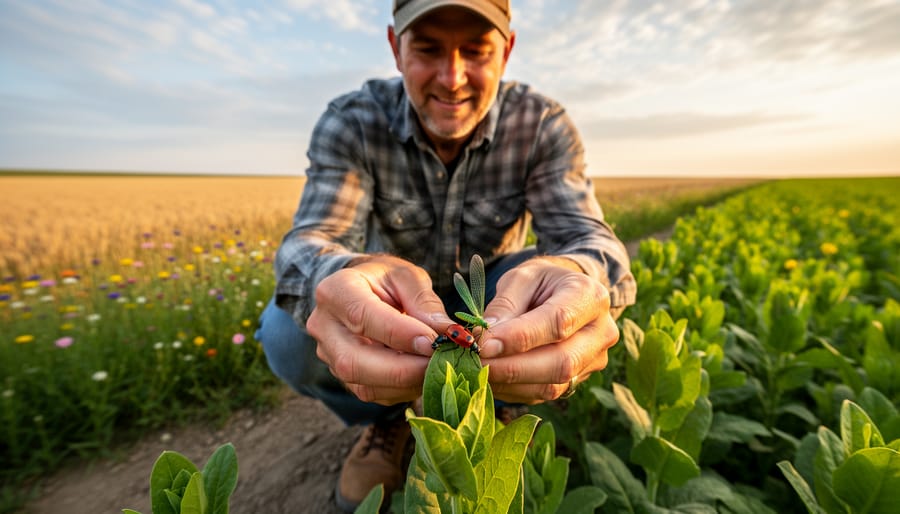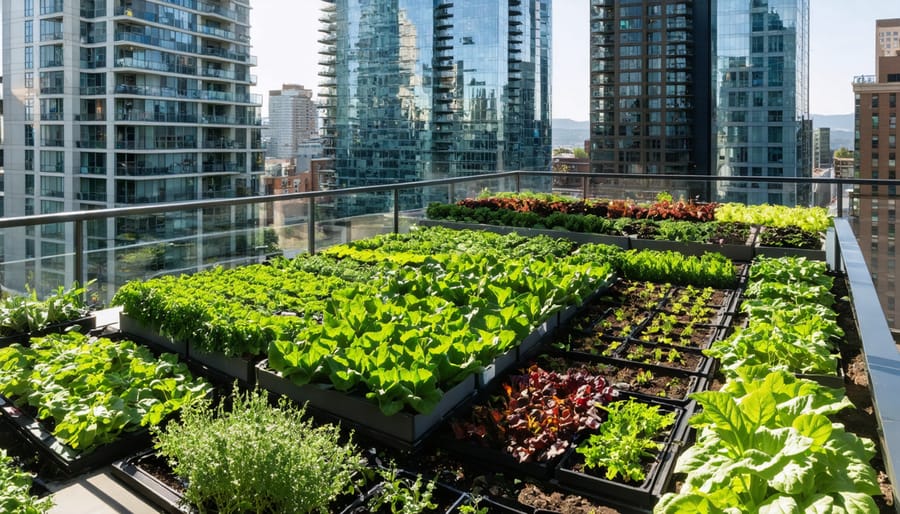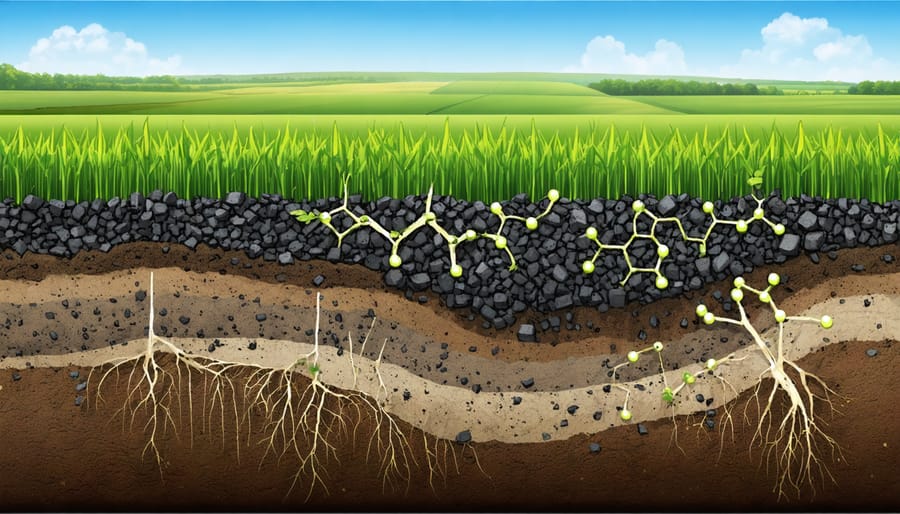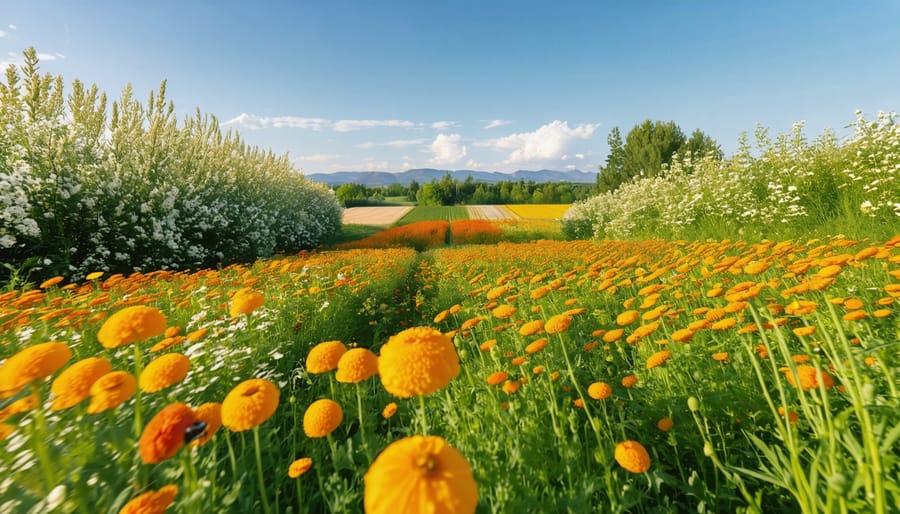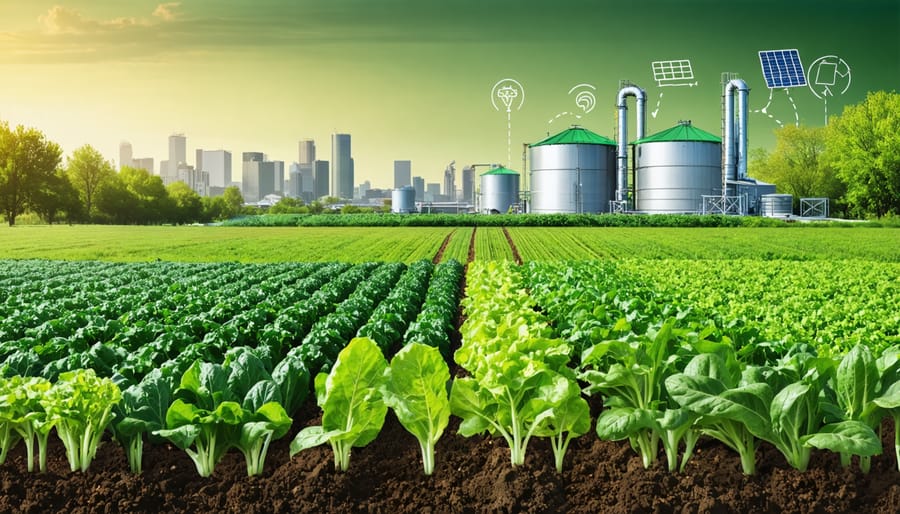Harvesting renewable resources sustainably demands precise balance between extraction rates and natural regeneration cycles – a critical foundation of modern sustainable farming practices. Across Alberta’s diverse agricultural landscape, successful resource management hinges on three essential principles: maintaining harvest levels below the ecosystem’s natural replacement rate, preserving genetic diversity within resource populations, and protecting critical habitat functions that support resource renewal.
For Canadian farmers, this translates into measurable benchmarks that ensure long-term viability while maximizing current yields. Whether managing timber stands, forage crops, or water resources, sustainable harvesting requires detailed monitoring of resource health indicators, precise timing of extraction activities, and strategic rotation patterns that allow for complete regeneration cycles.
Recent data from Alberta’s agricultural sector demonstrates that farms implementing these sustainable harvesting principles consistently outperform traditional operations in both resource longevity and economic returns. By treating renewable resources as dynamic systems rather than static assets, farmers create resilient operations that weather market fluctuations while preserving ecological integrity for future generations.
The Sustainable Harvest Balance in Alberta Agriculture
Regeneration vs. Consumption Rates
In sustainable agriculture, success hinges on maintaining a delicate balance between how quickly we harvest resources and how fast they naturally replenish themselves. Here in Alberta, we’ve seen this principle in action with our forage crops and woodlots. Take the example of Doug Henderson’s farm near Red Deer, where rotational grazing allows pastures to recover fully between livestock movements, ensuring continuous grass availability throughout the season.
The key is to harvest at a rate that’s equal to or less than the resource’s natural regeneration rate. For instance, if a hay field can produce 4 tonnes per hectare annually, sustainable harvesting means not removing more than 4 tonnes per hectare each year. This approach maintains the resource’s long-term viability while providing consistent yields.
Many Alberta farmers are adopting monitoring systems to track regeneration rates, using soil testing and biomass measurements to guide their harvesting decisions. By understanding these natural cycles and adjusting our practices accordingly, we can ensure our renewable resources continue to sustain our operations for generations to come. Remember, nature sets the pace – our job is to work within its rhythm.
Ecosystem Impact Assessment
Regular ecosystem assessments are crucial for maintaining the delicate balance between resource harvesting and environmental health. Here in Alberta, successful farmers conduct seasonal monitoring of their land’s biodiversity, soil quality, and water resources. This practice helps ensure that harvesting activities don’t exceed the ecosystem’s natural regeneration capacity.
Local studies show that farms implementing routine ecological assessments experience better long-term yields and fewer pest problems. For example, the Watson family farm in Red Deer County has been monitoring native pollinator populations for the past decade, adjusting their harvesting schedule to protect these essential species. Their approach has led to a 15% increase in crop yields while maintaining healthy ecosystem functions.
Key indicators to monitor include soil organic matter levels, water quality in nearby streams, and the presence of indicator species like birds and beneficial insects. Many Alberta farmers are now using digital tools and smartphone apps to track these metrics throughout the growing season. Conservation groups and agricultural extension services offer support in setting up monitoring programs and interpreting the data.
Remember, a healthy ecosystem is your farm’s greatest asset – it’s worth taking the time to understand and protect it.
Practical Applications in Alberta Farms
Crop Rotation Success Stories
Meet Sarah Johnson, a third-generation farmer from Lethbridge County, who transformed her 800-hectare farm’s productivity through strategic crop rotation. “By alternating canola, wheat, and pulses over three years, we’ve reduced our fertilizer costs by 30% while maintaining consistent yields,” Sarah explains. Her soil testing shows significantly improved nitrogen levels and organic matter content since implementing this rotation five years ago.
In Red Deer County, the Peterson family farm showcases another success story. Their innovative four-year rotation including barley, canola, field peas, and wheat has led to a 25% reduction in pest problems and a 20% increase in overall yield. “The key was introducing pulses,” says Tom Peterson. “They’ve naturally enriched our soil and created a more resilient farming system.”
Grande Prairie farmer Mike Thompson’s experience demonstrates the long-term benefits of crop rotation. His six-year plan, which includes fallow periods and cover crops, has resulted in improved soil structure and water retention. “Our fields now handle drought conditions better than ever before,” Mike notes. His approach has become a model for other farmers in the Peace Region.
These success stories highlight how well-planned crop rotation not only sustains soil health but also enhances farm profitability. The Alberta Crop Rotation Network estimates that farmers using strategic rotation plans see an average 15-20% increase in net returns over five years.
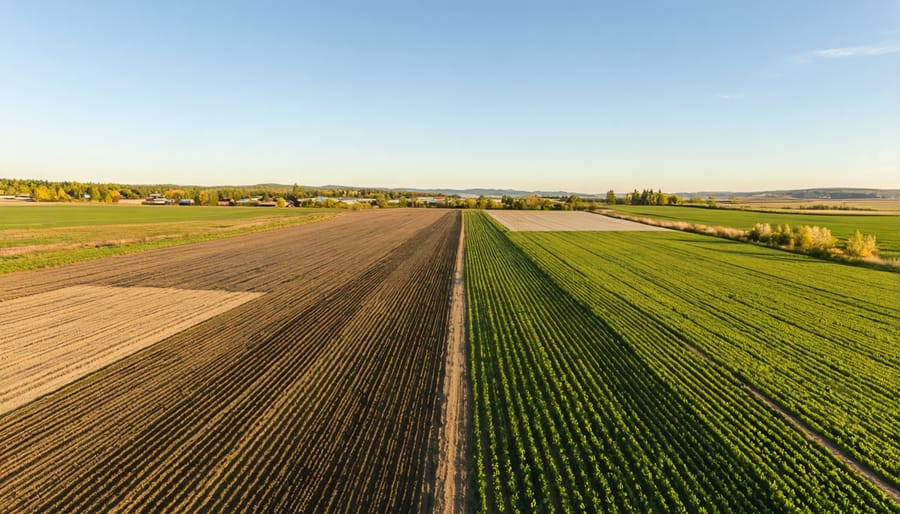
Water Resource Management
In Alberta’s agricultural landscape, effective water resource management is crucial for sustainable farming practices. Our research shows that farms implementing water conservation techniques can reduce water usage by up to 30% while maintaining crop yields.
Many Alberta farmers have found success with precision irrigation systems that monitor soil moisture levels in real-time. For example, the Smith family farm in Lethbridge decreased their water consumption by 25% after installing soil moisture sensors and implementing scheduled irrigation cycles.
Consider these proven strategies for sustainable water management:
– Install drip irrigation systems to minimize water loss through evaporation
– Schedule irrigation during early morning or evening hours
– Maintain proper soil health to improve water retention
– Use mulching to reduce soil moisture loss
– Install rainwater harvesting systems for supplemental irrigation
The Alberta Irrigation Technology Centre demonstrates that combining these methods can lead to significant water savings. Local farmer Sarah Johnson shares, “Since implementing these practices, we’ve cut our water usage by a third while seeing improved crop health.”
Remember to regularly monitor and adjust your irrigation systems based on weather patterns and crop needs. Working with local agricultural extension services can provide valuable guidance in optimizing your water management strategy for long-term sustainability.
Biomass Energy Production
Agricultural waste presents a significant opportunity for renewable energy production in Alberta’s farming communities. When harvested sustainably, crop residues and other biomass materials can provide a reliable energy source while maintaining soil health and farm productivity.
For optimal sustainability, farmers should follow the “30-70 rule” – harvesting no more than 30% of agricultural residues for biomass energy, leaving 70% for soil protection and nutrient cycling. This approach has proven successful at the Wheatland County Biomass Facility, where local farmers supply straw and corn stalks while maintaining healthy soil organic matter levels.
Collection timing is crucial for sustainable biomass harvesting. The best practice is to gather materials after ensuring adequate soil coverage for erosion control and when moisture content is between 15-20%. This maximizes energy potential while minimizing transportation and storage costs.
Many Alberta farmers are now incorporating biomass collection into their regular post-harvest operations. For example, the Jensen family farm in Red Deer County uses modified balers to collect wheat straw, generating enough biomass to power their grain drying operations while maintaining soil productivity.
To ensure long-term sustainability, monitor soil organic matter levels annually and adjust harvest rates accordingly. Consider partnering with local biomass facilities that offer soil testing services and harvesting guidelines tailored to your specific field conditions.
Measuring Sustainability: Key Indicators
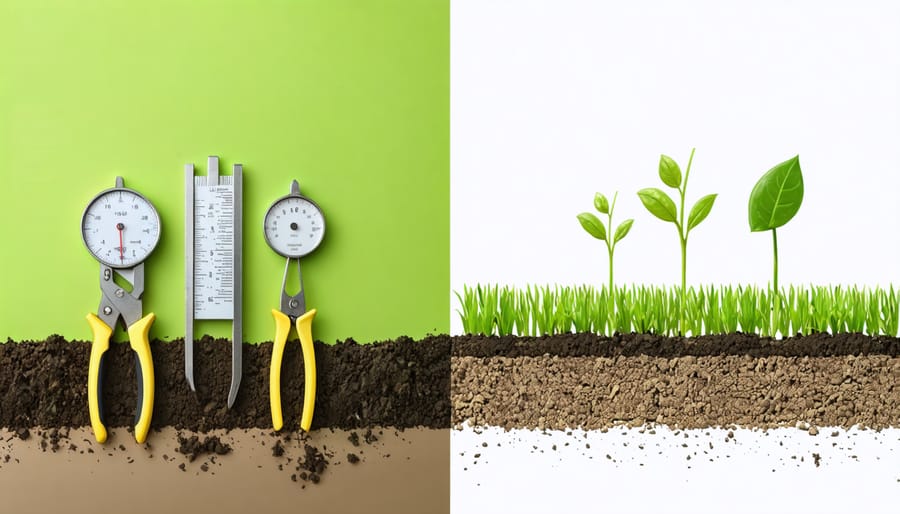
Soil Health Monitoring
Regular monitoring of soil health and regeneration is crucial for sustainable harvesting practices in Alberta’s agricultural landscape. Farmers across the province are increasingly adopting systematic approaches to track soil quality using both traditional and modern methods.
Essential monitoring tools include soil testing kits that measure organic matter content, pH levels, and nutrient availability. Many Alberta farmers conduct seasonal soil tests, typically in spring and fall, to track changes and adjust their management practices accordingly. A particularly effective method is the use of soil penetrometers to measure compaction levels, which directly impact root growth and water infiltration.
Visual assessment techniques, such as the spade test and earthworm counts, provide valuable insights into soil structure and biological activity. Local agricultural extension services recommend maintaining detailed soil health records, including photographs and observation notes, to track changes over multiple growing seasons.
Modern technology has introduced precision agriculture tools like GPS-guided soil sampling and remote sensing devices that create detailed soil health maps. These tools help farmers identify areas requiring specific attention and optimize resource allocation.
For optimal results, combine these monitoring methods with regular consultation with local soil specialists and participation in soil health workshops offered through Alberta’s agricultural cooperatives. This integrated approach ensures that harvesting practices maintain or improve soil quality for future generations.
Biodiversity Markers
Monitoring biodiversity on your farm serves as a vital indicator of sustainable harvesting practices. Here in Alberta, we’ve seen remarkable success stories where farmers use specific markers to track their land’s ecological health. These markers include the presence of native pollinators, soil organisms, and bird species diversity.
For example, the Wheatland Conservation Area has documented that farms maintaining at least three different crop types in rotation typically support 40% more bird species than monoculture operations. Similarly, monitoring earthworm populations can provide valuable insights – healthy Alberta farmland typically shows 8-10 earthworms per square foot in spring soil samples.
Consider tracking these key biodiversity indicators on your land:
– Beneficial insect populations, particularly native bees and predatory insects
– Soil microorganism diversity through regular testing
– Bird species variety, especially during nesting seasons
– Plant diversity in field margins and wetland areas
– Presence of amphibians in seasonal water bodies
Local farmer Mike Thompson from Red Deer County maintains detailed records of wildlife sightings and has noticed a 30% increase in beneficial insects since implementing sustainable harvesting practices five years ago. His success demonstrates how biodiversity markers can validate your sustainable farming approaches while contributing to long-term soil health and crop resilience.
Remember to document changes seasonally and maintain consistent monitoring locations across your property for the most reliable indicators of ecological health.
Future-Proofing Your Farm
Technology Integration
Modern agriculture has embraced smart farming technology to ensure sustainable harvesting practices. Alberta farmers are increasingly adopting precision agriculture tools like GPS-guided equipment, soil moisture sensors, and drone monitoring systems to optimize resource management. These technologies help farmers track growth patterns, monitor soil health, and determine ideal harvesting times with remarkable accuracy.
Remote sensing technologies and satellite imagery now enable farmers to assess crop health across vast areas, ensuring harvesting occurs at peak sustainability. Mobile apps and farm management software help track harvest yields, weather patterns, and resource usage, providing valuable data for long-term planning.
Many Alberta producers are using automated irrigation systems with soil moisture sensors to prevent over-watering and maintain optimal growing conditions. These systems, combined with weather forecasting technology, help farmers make informed decisions about resource allocation and harvesting schedules.
Digital record-keeping platforms have also revolutionized how we track and maintain sustainable practices, making it easier to demonstrate compliance with certification requirements and share best practices within the farming community.
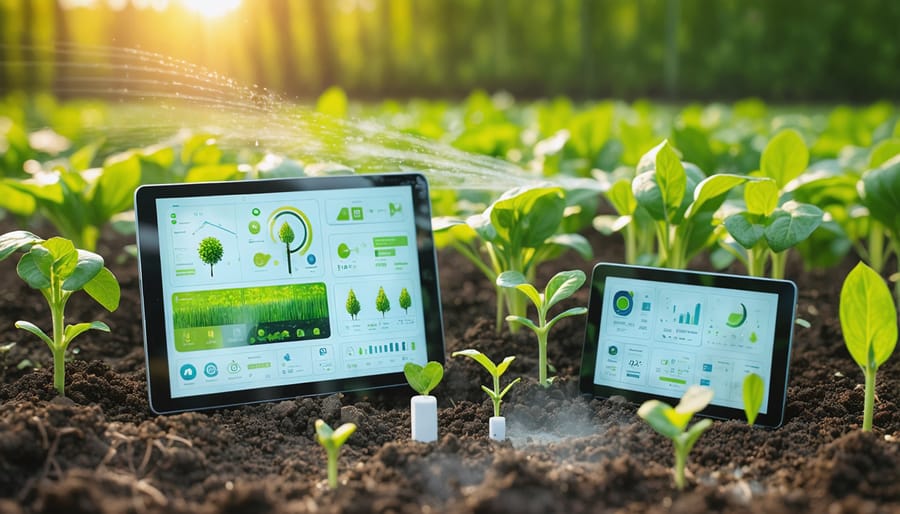
Community Collaboration
In Alberta’s farming communities, successful sustainable harvesting often relies on strong collaborative networks. The Southern Alberta Conservation Network, for instance, connects over 200 farmers who share best practices and resources for sustainable crop rotation and soil management. These partnerships have led to a 30% increase in sustainable farming adoption rates across the region.
Local farming cooperatives play a crucial role in knowledge sharing. The Red Deer Agricultural Society hosts monthly meetings where experienced farmers mentor newcomers in sustainable practices. They’ve established a seed-sharing program that helps maintain crop diversity while reducing costs for individual farmers.
Digital platforms have revolutionized community collaboration. The Alberta Sustainable Farming Forum, with over 5,000 members, enables real-time discussion of harvesting techniques, weather patterns, and market conditions. Farmers can quickly share updates about successful sustainability initiatives or warn others about potential challenges.
Workshop programs, like those offered through local agricultural extension offices, bring together farmers, agronomists, and researchers. These sessions focus on practical skills development and provide opportunities for farmers to network while learning about new sustainable harvesting methods.
As we’ve explored throughout this article, sustainable harvesting of renewable resources is not just an environmental imperative – it’s a practical approach that ensures the long-term viability of Alberta’s agricultural sector. The key to success lies in understanding and implementing the balance between resource extraction and natural regeneration rates.
By adopting sustainable practices, Alberta farmers have demonstrated that it’s possible to maintain profitable operations while preserving resources for future generations. The success stories we’ve shared from local farms show that sustainable harvesting can lead to improved soil health, increased biodiversity, and better crop yields over time.
Remember that sustainable harvesting isn’t a fixed set of rules, but rather an adaptive process that responds to changing conditions and new information. Whether you’re managing timber lots, rotating crops, or maintaining grasslands, the principles remain the same: monitor carefully, harvest within regenerative limits, and always plan for the long term.
We encourage you to start small, perhaps by implementing one or two sustainable practices on your farm, and gradually expanding as you see results. Connect with local agricultural extension services and fellow farmers who are already on this journey. Their experiences and insights can be invaluable as you develop your own sustainable harvesting strategies.
Together, we can build a resilient agricultural future that supports both our farming communities and the natural systems we depend on. Your choices today will help ensure that Alberta’s renewable resources continue to provide for generations to come.

